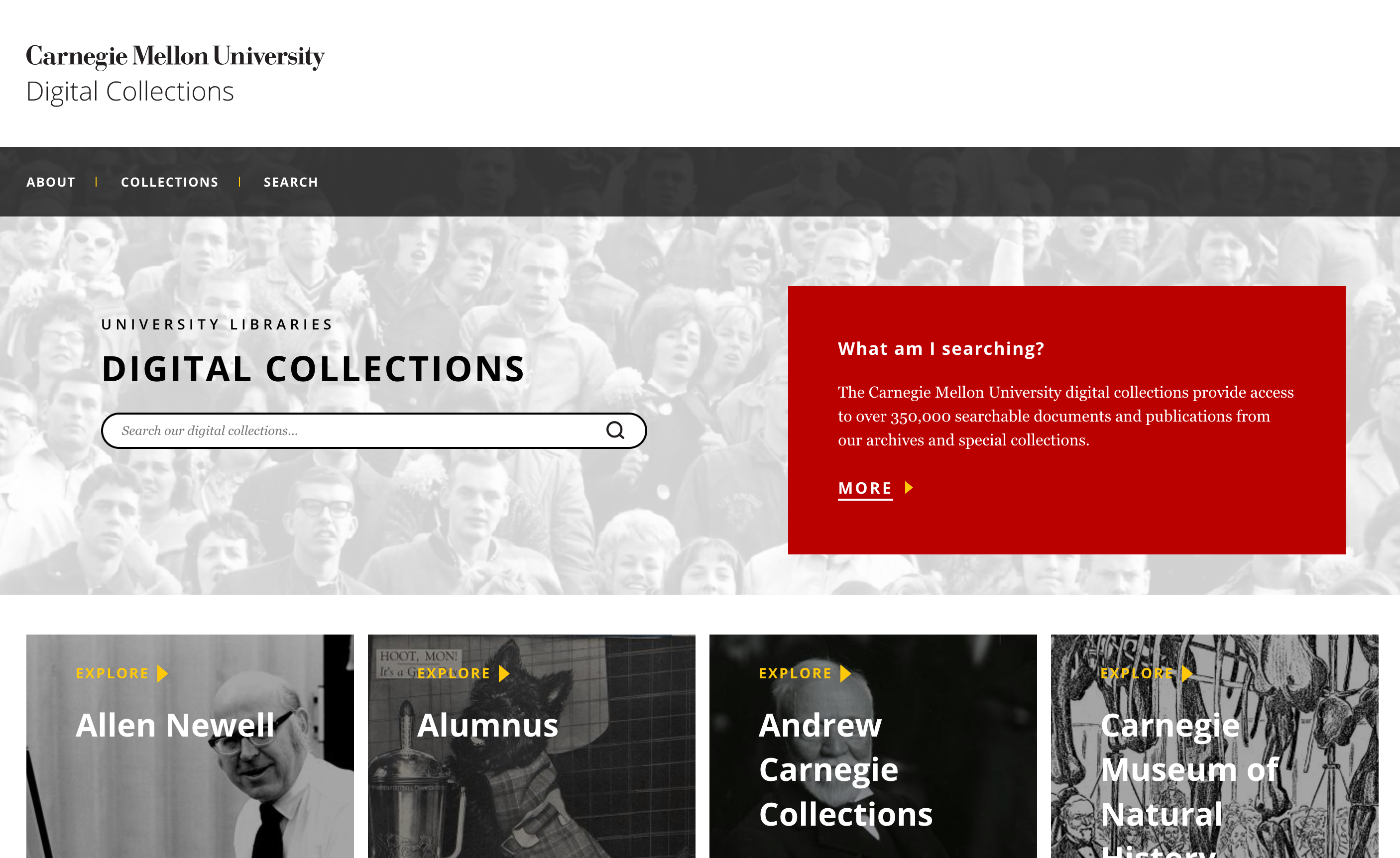Long simmering projects: CMU’s Digital Collections, and an NEH grant
Scrolling through the reverse chronological archive of this blog, I’ve clearly had less and less time to write up posts over the years! Although part of that is to do with time, the other is due to the nature of my work projects, which have continually increased in size and complexity. They take longer in total to be ready for public consumption, and so fewer and fewer chances for in-progress reports.
But I’m glad to start the new year off with two finally-public projects.
CMU Libraries Digital collections
After almost two years of work, CMU Libraries has launched its new digital collections platform right before Christmas last year: https://digitalcollections.library.cmu.edu/

Homepage of Carnegie Mellon University Libraries Digital Collections platform
The new database is built on Islandora 8, an open source repository system. As with any migration project, it is still very much in-progress, but it was a real milestone to be able to launch it for the public. It is also the Libraries’ first major foray into running open source software and participating actively in a community-steered technical project. The learning curve on working in that structure versus contracting with a vendor will stretch out for quite some time past this launch.
Secret Printing: Freedom and the Press before Freedom of the Press
The other big news of the new year is that we’ve just received a National Endowment for the Humanities Digital Humanities Advancement Grant for a computational bibliography project to produce tools for technologists and historians to unearth information about the history of book printing and publishing through digital analysis of typefaces.
To get an idea of what the work entails, you can learn more from my colleague at CMU, Sam Lemley, our Curator of Special Collections:
An example. The W on left appears in an unattributed book, printed in 1685. The W on the right appears in a 1689 book with a named imprint. This pair is not demonstrative on its own, but a slew of similar matches argues for attributing the anonymous book to the printer on right. https://t.co/69CVybJRrH pic.twitter.com/QxkVQQ11Bk
— Sam Lemley (@samuellemley) January 12, 2022
This grant took two tries to land. One of the reasons for its success this round, I believe, was the sheer amount of additional foundational work the project team did over the last year. Having served as a reviewer for teh NEH DHAG grants before, I can’t emphasize enough how important the risk management criterion is when adjudicating Level III grants - the largest grant offered in the DHAG category. Although the outright award (~$300,000) is paltry compared to funding from agencies like the NSF or NIH, it is one of the larger single awards that the NEH offers. Thus you need to demonstrate that your project has has a high chance of success by accomplishing a great deal of preliminary work before your application. Like a lot of grants, this can feel like you essentially have to DO the work before you get money to do the work. But in this case, the support is essential not just to polish the technical backbone that we are offering, but to fund the work of domain experts to actually do the work of using these tools to curate significant typepieces. I’m particularly interested in this because it will mean finally getting to put ideas into practice for generating preservable static digital publications from a much larger data-intensive computing pipeline.
